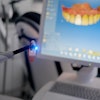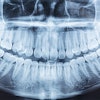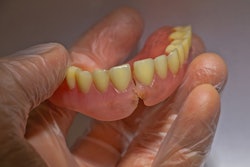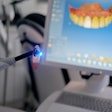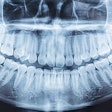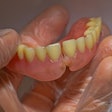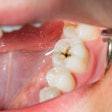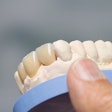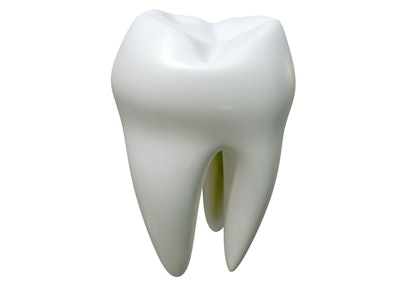
CAD/CAM resin-based dental composites exposed to stomach acid caused by gastroesophageal reflux disease (GERD) showed less wear than conventional resin-based composites. The in-vitro study was published in the Journal of the Mechanical Behavior of Biomedical Materials.
Since gastric acid exposure sped up the deterioration of the mechanical properties, including flexural strength and wear resistance, within six months, it may be concluded that material plays an integral role in the durability of dental restorations, the authors wrote.
“Thus, CAD/CAM composites may represent a suitable choice for the treatment of patients presenting erosive issues,” wrote the authors, led by Dr. Ronaldo Hirata, PhD, of the New York University College of Dentistry (J Mech Behav Biomed Mater, May 3, 2024).
About 20% of individuals in the U.S. have GERD, according to the U.S. National Institute of Diabetes and Digestive and Kidney Diseases.
Over time, microhardness, flexural strength and wear resistance are common problems for resin-based composites. In general, the oral cavity is a challenging environment due to its exposure to saliva and other things like alcohol and acids, which can lead to dental erosion and compromise the mechanical properties and clinical durability of composites, according to the study.
Therefore, a study was conducted to evaluate the mechanical properties of conventional and CAD/CAM resin-based composites exposed to simulated gastric acid aging. To assess this, three conventional composites and three CAD/CAM ones were either exposed to gastric acid or were not, and then analyzed for Vickers microhardness (VHN), wear resistance, and flexural strength after simulated chewing over a six-month period. In addition, statistical analysis was conducted.
Although exposure to gastric acid led mechanical properties to fall significantly for all resin-based composites (p value < 0.05), conventional composites showed greater wear and less flexural strength and microhardness than CAD/CAM ones when exposed to simulated stomach acid, the authors wrote.
The greatest resistance to erosion was found in the CAD/CAM composites. This may be due to polymerization levels, which are done under controlled high temperature and pressure conditions. The controlled polymerization favors a more homogenous structure formation with fewer defects inside, they wrote.
Limitations of the study include its short duration of six months. Despite the study's limitations, it is plausible to conclude that dental restoration durability may rely on the material used, Hirata et al wrote.
“Conventional RBCs might show greater reduction in mechanical properties compared to CAD/CAM RBCs (resin-based composites) when exposed to gastric acid attack,” they concluded.

